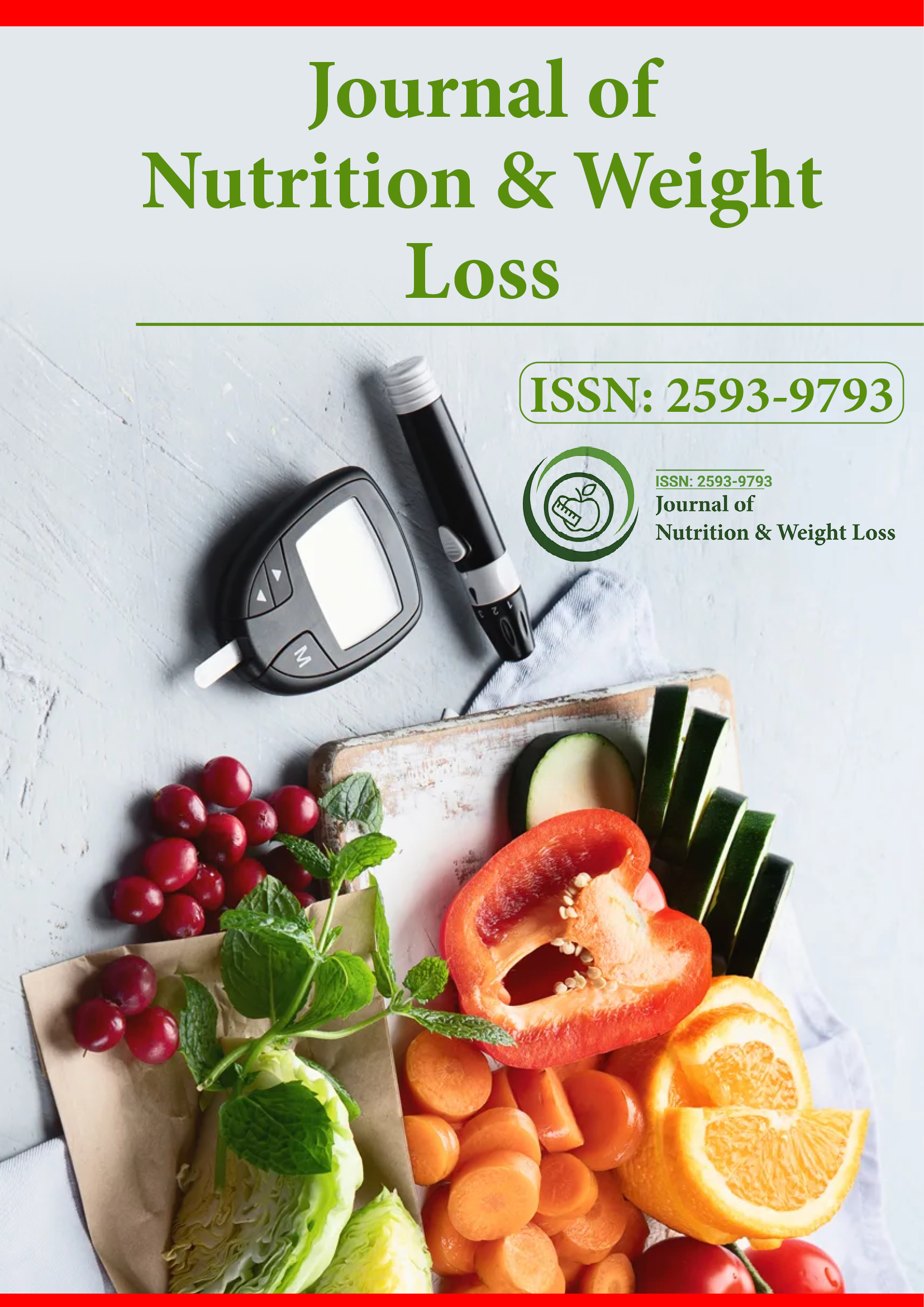а§Ѓа•За§В а§Е৮а•Ба§Ха•На§∞ুড়১
- RefSeek
- ৺ু৶а§∞а•Н৶ ৵ড়৴а•Н৵৵ড়৶а•На§ѓа§Ња§≤а§ѓ
- а§Иа§ђа•Аа§Па§Єа§Єа•Аа§У а§Па§Ьа§Љ
- ৙৐а§≤а•Л৮а•На§Є
- а§ѓа•Ва§∞а•Л ৙৐
- а§Ча•Ва§Ча§≤ а§Ьа•На§Юৌ৮а•А
а§Й৙ৃа•Ла§Ча•А а§Ха§°а§Ља§ња§ѓа§Ња§В
- а§Й৶а•Н৶а•З৴а•На§ѓ а§Фа§∞ ৶ৌৃа§∞а§Њ
- а§Єа§Ѓа§Ха§Ха•На§Ј а§Єа§Ѓа•Аа§Ха•На§Ја§Њ ৙а•На§∞а§Ха•На§∞а§ња§ѓа§Њ
- а§Е৮а•Ба§Ха•На§∞а§Ѓа§£а§ња§Ха§Њ а§П৵а§В а§Єа§Ва§Ча•На§∞а§єа§£
- ৵ড়ৣৃ৪а•Ва§Ъа•А
- ৙ৌа§Ва§°а•Ба§≤ড়৙ড় а§Ьа§Ѓа§Њ а§Ха§∞а•За§В
- а§Е৙৮ৌ ৙а•З৙а§∞ а§Яа•На§∞а•Иа§Х а§Ха§∞а•За§В
а§За§Є ৙а•Га§Ја•Н৆ а§Ха•Л а§Єа§Ња§Эа§Њ а§Ха§∞а•За§В
а§Ьа§∞а•Н৮а§≤ а§Ђа§Ља•На§≤а§Ња§ѓа§∞

а§Па§Ха•На§Єа•За§Є а§Ьа§∞а•Н৮а§≤ а§Ца•Ла§≤а•За§В
- а§Еа§≠а§ња§ѓа§Ња§В১а•На§∞а§ња§Ха•А
- а§Ж৮а•Б৵а§В৴ড়а§Ха•А а§П৵а§В а§Жа§£а•Н৵ড়а§Х а§Ьа•А৵৵ড়а§Ьа•На§Юৌ৮
- а§За§Ѓа•На§ѓа•В৮а•Ла§≤а•Йа§Ьа•А а§Фа§∞ а§Ѓа§Ња§За§Ха•На§∞а•Ла§ђа§Ња§ѓа•Ла§≤а•Йа§Ьа•А
- а§Фа§Ја§Іа§њ ৵ড়а§Ьа•На§Юৌ৮
- а§Ха•Га§Ја§њ а§Фа§∞ а§Ьа§≤а§Ха•Га§Ја§њ
- а§Ъа§ња§Хড়১а•На§Єа•Аа§ѓ ৵ড়а§Ьа•На§Юৌ৮
- а§Ьа•А৵ а§∞৪ৌৃ৮
- а§Ьа•И৵ а§Єа•Ва§Ъ৮ৌ ৵ড়а§Ьа•На§Юৌ৮ а§Фа§∞ а§Єа§ња§Єа•На§Яа§Ѓ а§Ьа•А৵৵ড়а§Ьа•На§Юৌ৮
- ১а§В১а•На§∞а§ња§Ха§Њ ৵ড়а§Ьа•На§Юৌ৮ а§Фа§∞ ু৮а•Л৵ড়а§Ьа•На§Юৌ৮
- ৮а§∞а•На§Єа§ња§Ва§Ч а§П৵а§В а§Єа•Н৵ৌ৪а•Н৕а•На§ѓ ৶а•За§Ца§≠а§Ња§≤
- ৮а•И৶ৌ৮ড়а§Х вАЛвАЛ৵ড়а§Ьа•На§Юৌ৮
- ৙৶ৌа§∞а•Н৕ ৵ড়а§Ьа•На§Юৌ৮
- ৙а§∞а•Нৃৌ৵а§∞а§£ ৵ড়а§Ьа•На§Юৌ৮
- ৙৴а•Б а§Ъа§ња§Хড়১а•На§Єа§Њ ৵ড়а§Ьа•На§Юৌ৮
- а§≠а•Ла§Ь৮ а§П৵а§В ৙а•Ла§Ја§£
- а§∞৪ৌৃ৮ ৵ড়а§Ьа•На§Юৌ৮
- ৵а•Нৃ৵৪ৌৃ ৙а•На§∞а§ђа§В৲৮
- ৪ৌুৌ৮а•На§ѓ ৵ড়а§Ьа•На§Юৌ৮
а§Еа§Ѓа•Ва§∞а•Н১
а§ђа§Ъа•На§Ъа•Ла§В а§Ѓа•За§В ১а•А৵а•На§∞ а§Ха•Б৙а•Ла§Ја§£ а§Ха•А ৵а•Нৃৌ৙а§Х১ৌ а§Фа§∞ а§За§Єа§Єа•З а§Ьа•Ба§°а§Ља•З а§Ха§Ња§∞а§Х
а§Єа§ња§Ѓа•З৮а•За§є а§П а§ђа•За§Ха•За§≤а•З, а§Ча•За§°а•За§Ђа•Й а§П а§Ђа•За§Ха§Ња§°а•В, а§П৮ড়ুа§≤ а§П а§Еа§Ъа§Ња§Ѓа§ѓа•За§≤а•За§є
৙а•Га§Ја•Н৆а§≠а•Ва§Ѓа§њ: ৵ড়а§Хৌ৪৴а•Аа§≤ ৶а•З৴а•Ла§В а§Ѓа•За§В а§ђа§Ъа•На§Ъа•Ла§В а§Ѓа•За§В ১а•А৵а•На§∞ а§Ха•Б৙а•Ла§Ја§£ а§Жа§Ѓ ৐ৌ১ а§єа•Иа•§ а§З৕ড়ৃа•Л৙ড়ৃৌ а§Й৙-а§Єа§єа§Ња§∞а§Њ а§Еа§Ђа•На§∞а•Аа§Ха•А ৶а•З৴а•Ла§В а§Ѓа•За§В а§Єа•З а§Па§Х а§єа•И, а§Ьа§єа§Ња§Б а§ђа§Ња§≤ а§Ха•Б৙а•Ла§Ја§£ а§Ха§Њ а§Єа•Н১а§∞ а§ђа§єа•Б১ а§Еа§Іа§ња§Х а§єа•Иа•§ а§За§Є а§Еа§Іа•Нৃৃ৮ а§Ха§Њ а§Й৶а•Н৶а•З৴а•На§ѓ а§З৕ড়ৃа•Л৙ড়ৃৌ а§Ха•З а§ђа•З৮ড়৴а§Ва§Ча•Ба§≤ а§Ча•Ба§Ѓа•Ба§Ьа§Љ а§Ха•На§Ја•З১а•На§∞ а§Ха•З а§Хৌুৌ৴а•А а§Ьа§ња§≤а•З а§Ѓа•За§В 6-59 а§Ѓа§єа•А৮а•З а§Ха•А а§Жа§ѓа•Б а§Ха•З а§ђа§Ъа•На§Ъа•Ла§В а§Ѓа•За§В ১а•А৵а•На§∞ а§Ха•Б৙а•Ла§Ја§£ а§Фа§∞ а§Йа§Єа§Єа•З а§Ьа•Ба§°а§Ља•З а§Ха§Ња§∞а§Ха•Ла§В а§Ха•А ৵а•Нৃৌ৙а§Х১ৌ а§Ха§Њ а§Жа§Ха§≤৮ а§Ха§∞৮ৌ а§•а§Ња•§
৵ড়৲ড়ৃৌа§Б: 26 а§Еа§Ха•На§Яа•Ва§ђа§∞ а§Єа•З 15 ৶ড়৪а§Ва§ђа§∞, 2019 ১а§Х а§Хৌুৌ৴а•А а§Ьа§ња§≤а•З а§Ѓа•За§В а§Па§Х а§Єа§Ѓа•Б৶ৌৃ а§Жа§Іа§Ња§∞ড়১ а§Ха•На§∞а•Йа§Є-а§Єа•За§Ха•Н৴৮а§≤ а§Еа§Іа•Нৃৃ৮ а§°а§ња§Ьа§Ља§Ња§З৮ а§Жа§ѓа•Ла§Ьড়১ а§Ха§ња§ѓа§Њ а§Ча§ѓа§Њ а§•а§Ња•§ а§Еа§Іа•Нৃৃ৮ а§Ѓа•За§В а§Ж৆ а§Єа•М а§Ъа•М৶৺ а§ђа§Ъа•На§Ъа•Ла§В а§Ха•Л ৴ৌুড়а§≤ а§Ха§ња§ѓа§Њ а§Ча§ѓа§Њ а§•а§Ња•§ а§Па§Ха§≤ а§Ь৮৪а§Ва§Ца•На§ѓа§Њ а§Е৮а•Б৙ৌ১ а§Єа•В১а•На§∞ а§Ха§Њ а§Й৙ৃа•Ла§Ч а§Ха§∞а§Ха•З ৮ুа•В৮ৌ а§Жа§Ха§Ња§∞ а§Ха•А а§Ча§£а§®а§Њ а§Ха•А а§Ча§И ৕а•Аа•§ а§Ша§∞а•Ла§В а§Єа•З а§ђа§Ъа•На§Ъа•Ла§В а§Ха§Њ а§Ъৃ৮ а§Ха§∞৮а•З а§Ха•З а§≤а§ња§П а§Ѓа§≤а•На§Яа•Аа§Єа•На§Яа•За§Ь а§Єа•Иа§В৙а§≤а§ња§Ва§Ч ১а§Х৮а•Аа§Х а§Ха§Њ а§За§Єа•Н১а•За§Ѓа§Ња§≤ а§Ха§ња§ѓа§Њ а§Ча§ѓа§Њ а§•а§Ња•§ а§Єа§Ва§∞а§Ъড়১ ৙а•На§∞৴а•Н৮ৌ৵а§≤а•А а§Ха§Њ а§Й৙ৃа•Ла§Ч а§Ха§∞а§Ха•З а§°а•За§Яа§Њ а§Па§Х১а•На§∞ а§Ха§ња§ѓа§Њ а§Ча§ѓа§Њ а§Фа§∞ ুৌ৮৵৴ৌ৪а•Н১а•На§∞а•Аа§ѓ ুৌ৙ а§≤а§ња§П а§Ча§Па•§ ৵а§∞а•На§£а§®а§Ња§§а•На§Ѓа§Х а§Фа§∞ ৵ড়৴а•На§≤а•За§Ја§£а§Ња§§а•На§Ѓа§Х а§°а•За§Яа§Њ ৵ড়৴а•На§≤а•За§Ја§£ SPSS а§Ха§Њ а§Й৙ৃа•Ла§Ч а§Ха§∞а§Ха•З а§Ха§ња§ѓа§Њ а§Ча§ѓа§Њ а§•а§Ња•§
৙а§∞а§ња§£а§Ња§Ѓ: а§Хৌুৌ৴а•А а§Ьа§ња§≤а•З а§Ѓа•За§В 6-59 а§Ѓа§єа•А৮а•З а§Ха•А а§Жа§ѓа•Б а§Ха•З а§≤а§Ча§≠а§Ч 10% а§ђа§Ъа•На§Ъа•З а§Ча§Ва§≠а•Аа§∞ а§∞а•В৙ а§Єа•З а§Ха•Б৙а•Лৣড়১ ৕а•З (95%CI:8.7-13.1)а•§ а§З৮ুа•За§В а§Єа•З, 5.5% (95%CI: 4.5-7.9) а§Ѓа§Іа•На§ѓа§Ѓ а§∞а•В৙ а§Єа•З а§Ха•Б৙а•Лৣড়১ ৕а•З а§Фа§∞ 4.3% (95%CI: 3.4-6.4) а§Ча§Ва§≠а•Аа§∞ а§∞а•В৙ а§Єа•З а§Ха•Б৙а•Лৣড়১ ৕а•За•§ а§≤а§Ча§≠а§Ч 0.4% а§ђа§Ъа•На§Ъа•Ла§В а§Ѓа•За§В а§Па§°а§ња§Ѓа§Њ ৕а•Аа•§ а§Ьড়৮ ৶а•За§Ца§≠а§Ња§≤а§Ха§∞а•Н১ৌа§Уа§В ৮а•З ৙а•На§∞ৌ৕ুড়а§Х (а§Па§Уа§Жа§∞=0.16, 95% а§Єа•Аа§Жа§И: 0.06-0.41) а§ѓа§Њ а§Ѓа§Ња§Іа•На§ѓа§Ѓа§ња§Х ৴ড়а§Ха•На§Ја§Њ (а§Па§Уа§Жа§∞=0.21, 95%а§Єа•Аа§Жа§И: 0.07-0.68) а§Ѓа•За§В а§≠а§Ња§Ч а§≤а§ња§ѓа§Њ ৕ৌ, а§Ьড়৮ а§ђа§Ъа•На§Ъа•Ла§В а§Ха•Л а§Й৮а§Ха•А а§Йа§Ѓа•На§∞ а§Ха•З а§Е৮а•Ба§Єа§Ња§∞ а§Яа•Аа§Ха§Њ а§≤а§Ча§Ња§ѓа§Њ а§Ча§ѓа§Њ ৕ৌ (а§Па§Уа§Жа§∞=0.38, 95%а§Єа•Аа§Жа§И: 0.18-0.82) а§Фа§∞ а§Ьড়৮ ুৌ১ৌа§Уа§В ৮а•З ৙а•На§∞৪৵а•Л১а•Н১а§∞ ৶а•За§Ца§≠а§Ња§≤ (а§Па§Уа§Жа§∞=0.13, 95%а§Єа•Аа§Жа§И: 0.06-0.30) а§Ѓа•За§В а§≠а§Ња§Ч а§≤а§ња§ѓа§Њ ৕ৌ, а§Й৮а§Ха•З а§ђа§Ъа•На§Ъа•Ла§В а§Ѓа•За§В ১а•А৵а•На§∞ а§Ха•Б৙а•Ла§Ја§£ а§єа•Л৮а•З а§Ха•А а§Єа§Ва§≠ৌ৵৮ৌ а§Ха§Ѓ ৕а•Аа•§ ৶а•Ва§Єа§∞а•А а§Уа§∞, а§Ьড়৮ а§ђа§Ъа•На§Ъа•Ла§В а§Ха•Л а§Єа§∞а•Н৵а•За§Ха•На§Ја§£ а§Єа•З ৙৺а§≤а•З ৶а•Л ৪৙а•Н১ৌ৺ а§Ѓа•За§В а§ђа•Ба§Ца§Ња§∞ а§Ха§Њ а§З১ড়৺ৌ৪ ৕ৌ (а§Па§Уа§Жа§∞=4.01, 95%а§Єа•Аа§Жа§И: 1.86-8.66), а§Ьড়৮ ৙а§∞ড়৵ৌа§∞а•Ла§В а§Ѓа•За§В ৙ৌа§Ва§Ъ ৵а§∞а•На§Ј а§Єа•З а§Ха§Ѓ а§Жа§ѓа•Б а§Ха•З а§ђа§Ъа•На§Ъа•Ла§В а§Ха•А а§Єа§Ва§Ца•На§ѓа§Њ <2 а§єа•И (а§Па§Уа§Жа§∞=3.63, 95%а§Єа•Аа§Жа§И: 1.60-8.31) а§Фа§∞ а§Ха§Ѓ а§Ь৮а•На§Ѓ а§Еа§В১а§∞а§Ња§≤ ৵ৌа§≤а•З а§ђа§Ъа•На§Ъа•Ла§В (а§Па§Уа§Жа§∞=3.27, 95%а§Єа•Аа§Жа§И: 1.75-6.12) а§Ѓа•За§В ১а•А৵а•На§∞ а§Ха•Б৙а•Ла§Ја§£ ৵ড়а§Х৪ড়১ а§єа•Л৮а•З а§Ха•А а§Еа§Іа§ња§Х а§Єа§Ва§≠ৌ৵৮ৌ ৕а•Аа•§
৮ড়ৣа•На§Ха§∞а•На§Ј: а§Хৌুৌ৴а•А а§Ьа§ња§≤а•З а§Ѓа•За§В а§ђа§Ъа•На§Ъа•Ла§В а§Ѓа•За§В ১а•А৵а•На§∞ а§Ха•Б৙а•Ла§Ја§£ а§Еа§Іа§ња§Х а§•а§Ња•§ а§≤а§°а§Ља§Ха§ња§ѓа•Ла§В а§Ха•А ৴ড়а§Ха•На§Ја§Њ ৐৥৊ৌ৮а•З а§Єа•З а§Хৌুৌ৴а•А а§Ьа§ња§≤а•З а§Ѓа•За§В а§ђа§Ъа•На§Ъа•Ла§В а§Ѓа•За§В ১а•А৵а•На§∞ а§Ха•Б৙а•Ла§Ја§£ а§Ха•Л а§Ха§Ѓ а§Ха§∞৮а•З а§Ѓа•За§В ু৶৶ а§Ѓа§ња§≤ а§Єа§Х১а•А а§єа•Иа•§ а§За§Єа§Ха•З а§Еа§≤ৌ৵ৌ, а§Ьа§ња§≤а§Њ а§Єа•Н৵ৌ৪а•Н৕а•На§ѓ а§Ха§Ња§∞а•На§ѓа§Ња§≤а§ѓ а§ђа§Ъа•На§Ъа•Ла§В а§Ѓа•За§В ১а•А৵а•На§∞ а§Ха•Б৙а•Ла§Ја§£ а§Ха•Л а§Ха§Ѓ а§Ха§∞৮а•З а§Ха•З а§≤а§ња§П ৙а•На§∞৪৵а•Л১а•Н১а§∞ ৶а•За§Ца§≠а§Ња§≤ а§Й৙৪а•Н৕ড়১ড় а§Фа§∞ а§Йа§Ѓа•На§∞ а§Ха•З а§єа§ња§Єа§Ња§ђ а§Єа•З а§Яа•Аа§Ха§Ња§Ха§∞а§£ ৐৥৊ৌа§Па§Ча§Ња•§ а§Ьа§ња§≤а§Њ а§Єа•Н৵ৌ৪а•Н৕а•На§ѓ а§Ха§Ња§∞а•На§ѓа§Ња§≤а§ѓ а§ђа§Ъа•На§Ъа•Ла§В а§Ѓа•За§В а§Ь৮а•На§Ѓ а§Ха•З а§ђа•Аа§Ъ а§Еа§В১а§∞а§Ња§≤ ৐৥৊ৌ৮а•З а§Фа§∞ а§ђа§Ъа•На§Ъа•Ла§В а§Ѓа•За§В а§Ьа•Н৵а§∞ а§Єа§Ва§ђа§Ва§Іа•А а§ђа•Аа§Ѓа§Ња§∞а§ња§ѓа•Ла§В а§Ха•Л а§∞а•Ла§Х৮а•З а§Ха•З а§≤а§ња§П а§Ха§Ња§Ѓ а§Ха§∞а•За§Ча§Ња•§